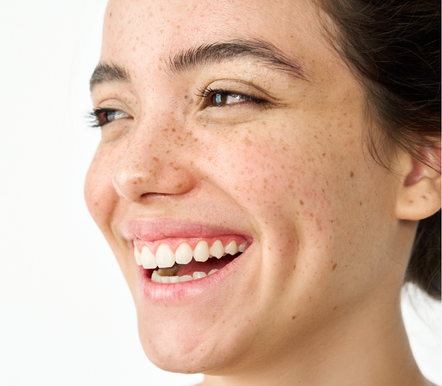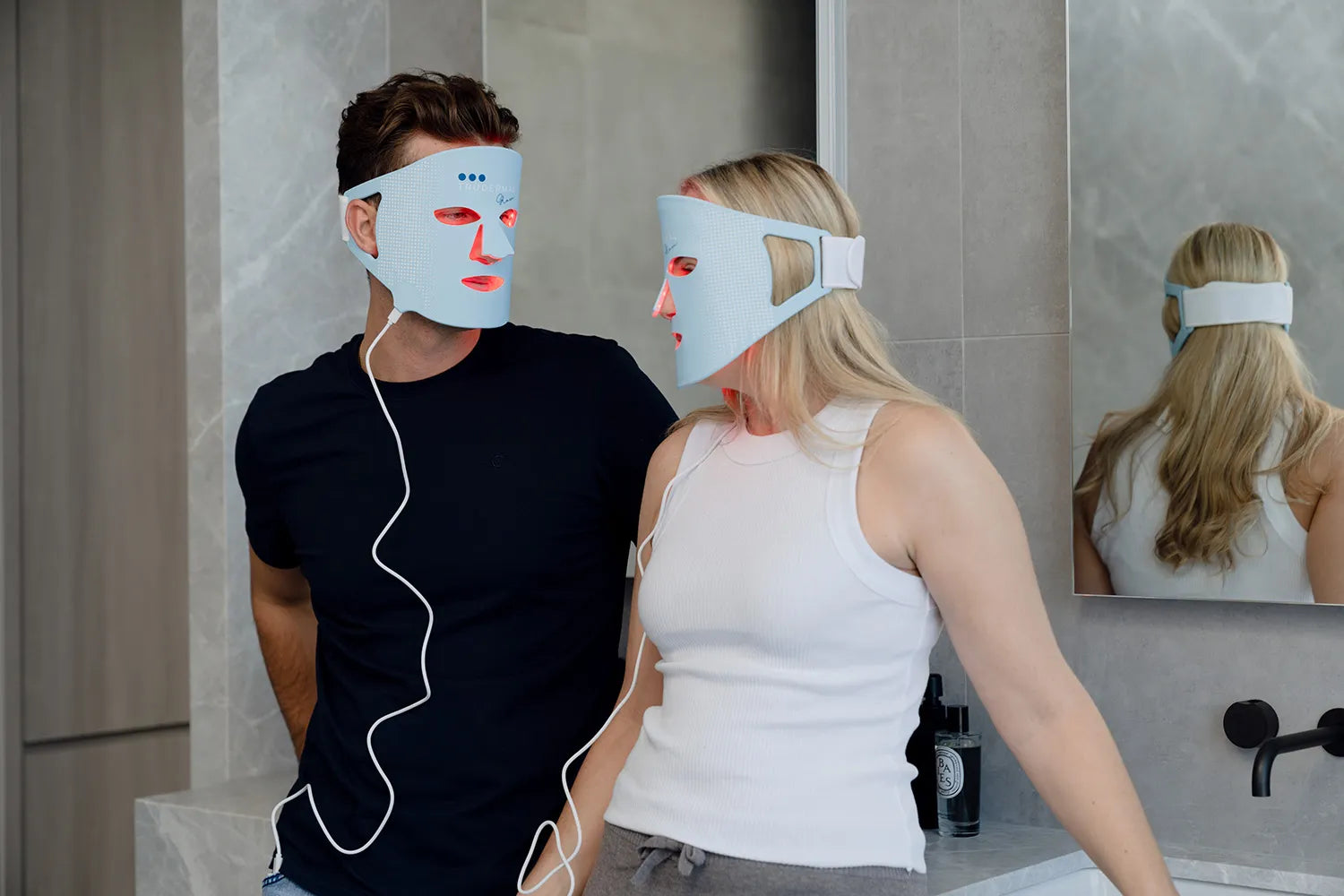
YOUR FAVOURITES
Our Beauty Journal
The powerful foods that can transform your skin
While layering serums and creams might be our go-to skin support methods, the most profound changes to your complexion might actually lie in the heart of the home – the kitchen. We’ve heard the saying ‘you are what you eat’ but when it comes to skin health, this saying couldn’t ring truer. The foods we consume don’t just fuel our bodies – they have the potential to reshape our skin’s structure, elasticity, and appearance at a cellular level. From stimulating collagen production to calming inflammation and creating an antioxidant shield, the connection between nutrition and glowing grows strong with each new study. The beautiful truth? Every meal is an opportunity to support your skin from the inside out. The Collagen Connection Here’s where things get interesting. Collagen, that coveted protein responsible for our skin’s bounce and firmness, can actually be supported by what we eat. When you consume collagen-rich foods, your digestive system breaks them down into bioactive peptides that essentially send a memo to your skin cells to make more collagen. So, what can we eat to further support this process? Bone broth is the ultimate skin elixir, while grass-fed meat and wild-caught fish can deliver those crucial amino acids your skin craves. What’s more, oral collagen supplementation has the potential to improve skin hydration and elasticity. The best approach? Try to make collagen-supporting foods a regular part of your routine whenever possible. The Skin-Soothing Impact of Omega-3s If your skin could choose one nutrient to be besties with, it would probably be omega-3 fatty acids. These powerful compounds work like internal peacekeepers, calming the inflammation that can trigger everything from acne flare-ups to premature aging. Here’s what makes omega-3s so special – they don’t just address in one skin concern. They’re super versatile. Research has shown they can help with acne, support those dealing with psoriasis and eczema and even help skin heal faster. Think of it as having a multi-tasking skincare ingredient that works from the inside. Our modern diets are often heavy on processed foods, so the best fix is trying to introduce fatty fish like salmon and sardines, walnuts with morning yoghurt or chia seeds sprinkled over just about anything. Building Your Antioxidant Army Consider antioxidants your skin’s personal security team – they’re constantly working to neutralise the free radicals that can age your skin and damage skin cells. The more colourful your plate, the stronger your antioxidant defence becomes. Blueberries reign supreme here, packing more antioxidant power than almost any other fruit or veggie. The key is to introduce variety. Different antioxidants tackle different types of damage, so try to build a diverse portfolio of foods rather than relying solely on a single superfood. Dark chocolate (yes!) can be loaded with flavonoids to support skin health, but you need to invest in the good stuff that’s 70% cacao or higher. Green tea also provides catechins that protect against sun damage. Even your morning tomato on toast is working overtime, delivering lycopene that helps to maintain skin structure. In the meantime, you may also consider introducing or increasing dark leafy greens and capsicum for an additional antioxidant boost. Go Mediterranean – a lifestyle not a diet Instead of thinking about restrictive rules or complicated meal plans, consider the Mediterranean approach – a way of eating that that naturally delivers everything your skin needs to thrive. It’s rich in omega-3s from fish, antioxidants from olive oil and colourful veggies, and anti-inflammatory compounds from herbs and spices. What makes this approach so appealing isn’t just the individual nutrients, it’s how they all work together. Research suggests this synergy might be more powerful than any single supplement or superfood. Best of all – it’s a sustainable approach to eating and living well. Think more fish, plenty of olive oil, loads of veggies, whole grains and yes, even a glass of red wine with dinner every now and then. When patience pays off While any chance in diet takes commitment – it might also take some patience before you see results. Unlike topical applications, which can often reveal results in an instant, nutritional interventions need a bit of time – potentially up to three months. Yes, it may seem like a long time, but this timeline reflects the natural process of skin cell renewal and the time it takes for nutritional changes to manifest in your skin’s structure and appearance. Understanding and accepting this will help you set realistic expectations and reinforce the importance of consistency in your skin health routine – whether you’re focused on topical or diet-based solutions.
Your SKIN 101 refresher
We’re tackling your common skin concerns and diving into the many ways red light therapy can address the issues you’re struggling with most. Whether you’re looking to reduce the appearance of wrinkles and fine lines, treat an eczema flare, or win the battle of the dark spots with hyperpigmentation – red light therapy might just be the solution you’re looking for. In delivering specific wavelengths of light to your face, which stimulate a range of cellular processes deep within your skin, red light therapy can give your skin cells a gentle boost that increases collagen production and assists in the healing process. Wrinkles and fine linesResearch shows that red light therapy can smooth the skin and help reduce the appearance of wrinkles by stimulating collagen production. This is particularly helpful for aging skin as it helps to improve skin elasticity while acting as preventative measure against future wrinkles and lines. Importantly, red light therapy can often do all of this without creating any cellular damage that you might experience with more intense treatments. Eczema and inflammatory skin conditions If you’re already dealing with conditions such as eczema, psoriasis, or inflammation of your skin, red light therapy can provide a gentler treatment option for those needing a softer approach. With consistent use, you may experience subtle but noticeable improvements in psoriasis, rosacea and eczema with consistent use. This comes to life through the anti-inflammatory effects of the treatment, which can change your skin’s immune response at a cellular level. Hyperpigmentation – an ongoing challenge While red light therapy might be appropriate for a range of skin conditions, when it comes to hyperpigmentation – things get a little more nuanced. You may need to take a more considered approach here as research shows people with darker skin tones are more sensitive to red light. This can lead to increased hyperpigmentation in some instances. When used correctly however, red light therapy should be able to help with specific types of pigmentation concerns, particularly inflammatory-related pigmentation as opposed to sun damage or melasma. Acne – the other spots Is your skin prone to breakouts? Red light therapy might change that. The anti-inflammatory benefits of red-light therapy help to release cytokines from macrophages and other cells that reduce inflammation. What makes this type of treatment particularly useful for those suffering from acne-prone skin is how gentle it can be while still supporting your skin to heal. There’s no need for topical treatments that lead to dryness or irritation – instead red-light therapy does the heavy lifting without compromising the skin barrier. It can even improve the texture of your skin and reduce the appearance of acne scars thanks to its collagen-promoting qualities. On the right wavelength While it might seem logical to assume higher wavelengths or red light produce better results, it’s important to remember that not all red light devices are created equal. Research has shown that 660nm wavelengths produce different (and more long-lasting) results to 980 nm. For the optimal results, aim for 600-700 nm of red light, which provides consistent light with a high capacity to penetrate the skin. Best of all, this is a treatment can be used daily from the comfort of home. Think of it as a long-term approach to skin care, not just a quick fix. Finding your rhythm While red-light therapy can be used daily, it’s still important to figure out what feels right for you and your skin. If you’re prone to sensitivity, you may want to consider starting slowly with shorter or less-frequent sessions. If you often experience redness or irritation, keep an eye on how your skin responds to each session and adjust accordingly. For those dealing with aging skin concerns such as deeper lines or loss of elasticity, you may need longer treatment periods to see those initial results. Remember, red light therapy isn’t necessarily a one-size-fits all approach to skin concerns – your age, skin type and skin concerns all play a role in how well you’re respond to treatment, whether at home or in-clinic. By giving your red light therapy a chance to work its magic and finding your own sweet spot – you can better support your skin’s natural aging and healing process over time.
LED red light therapy for Rosacea
Rosacea is a skin condition characterised by redness, flushing, and visible blood vessels. It affects millions of people worldwide and managing its symptoms and flare-ups can be a challenging journey.
Get clearer and younger looking skin with
Trudermal LED Light Therapy.
Make your best skin-vestment!
Get clearer and younger looking skin with
Trudermal LED Light Therapy.
Make your best skin-vestment!
























